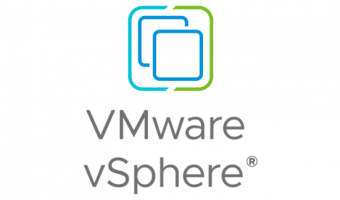Module 1: Introduction to VMware vSphere
Overview of Virtualization Concepts
VMware vSphere Architecture & Components
vSphere 8 Key Features & Enhancements
Understanding ESXi, vCenter, and Virtual Machines
Lab 1: Explore vSphere Client Interface & Components
Module 2: Installing and Configuring ESXi and vCenter Server
ESXi Installation and Initial Configuration
Deploying vCenter Server Appliance (VCSA)
Configuring vCenter for Management
Licensing and Permissions in vSphere
Lab 2.1: Install ESXi on a Physical/Virtual Machine
Lab 2.2: Deploy and Configure vCenter Server Appliance (VCSA)
Lab 2.3: Configure Licensing and User Permissions in vSphere
Module 3: Managing Virtual Machines
Creating and Configuring Virtual Machines (VMs)
Installing Guest OS & VMware Tools
VM Snapshots and Cloning
vApp and VM Templates
Lab 3.1: Create and Configure Virtual Machines (VMs)
Lab 3.2: Manage VM Snapshots and Cloning
Lab 3.3: Configure VM Resources and Performance Settings
Lab 3.4: Convert Physical Machines to Virtual Machines (P2V)
Module 4: vSphere Networking
vSphere Networking Overview
Configuring Virtual Switches and Distributed Switches
VLANs and Network Security Policies
Managing Network Load Balancing
Lab 4.1: Configure Standard vSwitch and Port Groups
Lab 4.2: Implement vSphere Distributed Switch (vDS)
Lab 4.3: Configure vSphere Network Security Policies
Lab 4.4: Enable NIC Teaming and Load Balancing
Module 5: vSphere Storage Management
vSphere Storage Concepts: VMFS, NFS, vSAN
Configuring Storage Adapters and Datastores
Storage Policies and Storage DRS
Working with iSCSI, FC, and NVMe Storage
Lab 5.1: Configure iSCSI and NFS Datastores
Lab 5.2: Implement vSAN Cluster and Storage Policies
Lab 5.3: Configure Storage Multipathing and Failover
Lab 5.4: Create and Manage Storage DRS and Storage I/O Control
Module 6: Resource Management and High Availability
Understanding Resource Pools
vSphere High Availability (HA) Configuration
vSphere Distributed Resource Scheduler (DRS)
VMware vMotion, Storage vMotion
Lab 6.1: Configure and Manage Resource Pools
Lab 6.2: Implement vSphere High Availability (HA)
Lab 6.3: Configure vSphere Distributed Resource Scheduler (DRS)
Lab 6.4: Perform vMotion and Storage vMotion
Module 7: Security and Access Management
vSphere Security Best Practices
Managing User Roles & Permissions
Securing ESXi and vCenter Server
Implementing VM Encryption and Secure Boot
Lab 7.1: Configure Role-Based Access Control (RBAC)
Lab 7.2: Enable Secure Boot and VM Encryption
Lab 7.3: Implement ESXi Host Security Hardening
Module 8: Monitoring and Performance Optimization
vSphere Monitoring Tools (vSphere Client, ESXTOP, Alarms)
Analyzing Performance Metrics and Logs
Optimizing Virtual Machine Performance
Troubleshooting Common vSphere Issues
Lab 8.1: Monitor vSphere Performance using ESXTOP
Lab 8.2: Configure and Analyze vSphere Alarms
Lab 8.3: Utilize vSphere Performance Charts and Logs
Lab 8.4: Optimize VM Performance with Resource Allocation
Module 9: Backup, Restore, and Disaster Recovery
vSphere Data Protection and Backup Solutions
Configuring and Managing vSphere Replication
Disaster Recovery Planning with VMware Site Recovery Manager (SRM)
Lab 9.1: Perform VM Backup and Restore using vSphere Data Protection
Lab 9.2: Configure vSphere Replication for Disaster Recovery
Lab 9.3: Implement Site Recovery Manager (SRM) for Failover
Module 10: Automation with vSphere CLI and PowerCLI
Introduction to vSphere CLI and PowerCLI
Managing vSphere Components with Automation
Scripting VM Deployments and Configurations
Lab 10.1: Automate VM Creation using PowerCLI
Lab 10.2: Perform Bulk Configuration Changes via CLI
Lab 10.3: Schedule Automated Tasks with vSphere API



